TL;DR
Want affordable decorator tricks from the Southern Living Idea House? Start with a tight color palette, bold paint, and fabric DIYs to add character. Learn how to use bold paint colors on a budget and create flow between rooms with color for a pulled-together, personal look.
Why Budget Decorating Works Right Now
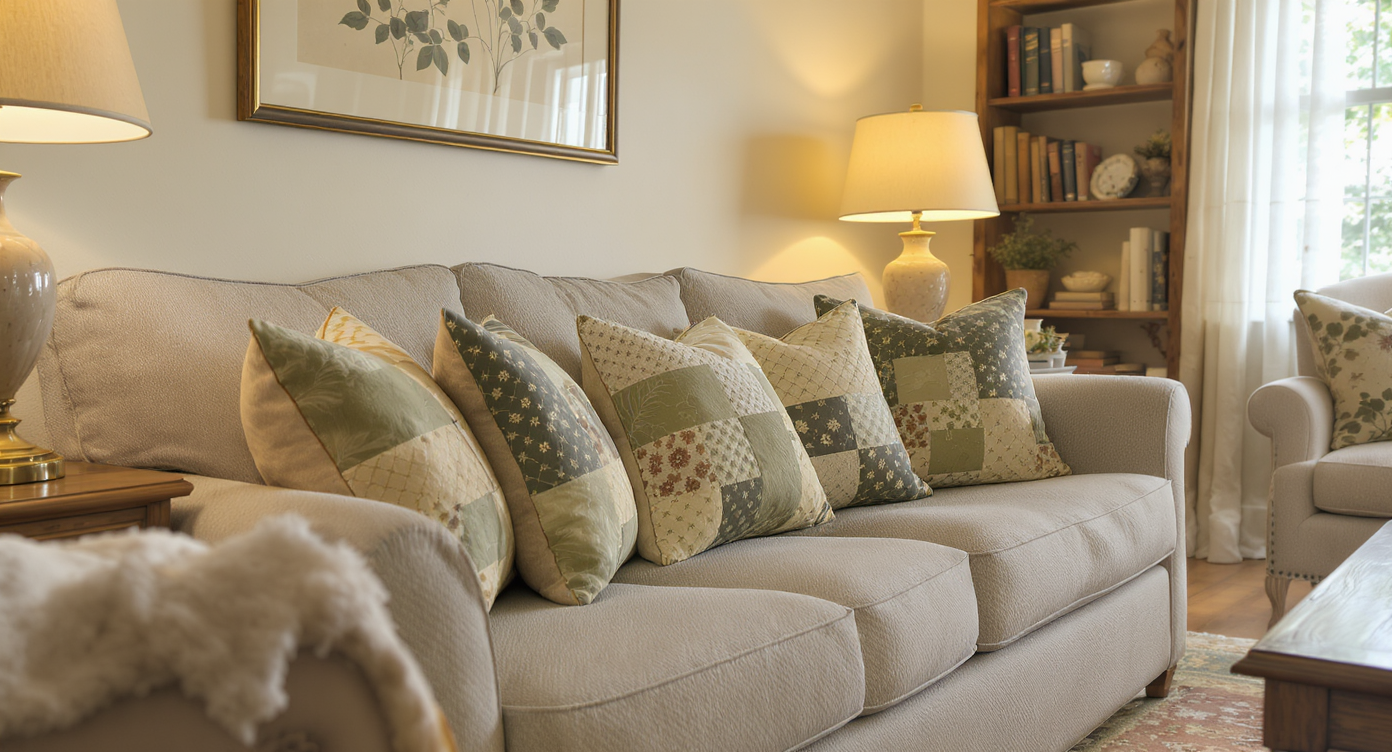
Mixing bold fabrics and antiques adds character without overspending in any living space.
Budget decorating can look bespoke: unify your color palette, go bold with paint, and lean on fabric DIYs and antiques to add lasting charm.
Here’s the thing: elevating a new construction or a tired room does not require a luxury budget. The Southern Living 2025 Idea House, designed by Charlotte Moss, proves that a thoughtful palette, strategic paint, and a few creative fabric moments can build instant character.
If your search intent is how to add character to a new construction home or how to mix patterns in a traditional living room, you’re in the right place. Below, seven affordable decorator tricks inspired by this year’s Idea House show how to make rooms flow, feel rooted, and look more expensive than they are.
Suggested image caption and alt text: Traditional living room design with mixed patterned furnishings in greens and browns, cozy arrangement, window-framed views. Alt: living room design with mixed patterns and green color palette.
The Essential Strategy: Seven Low-Cost Moves That Deliver
1) Keep a tight palette
A two- to three-color family (think greens and browns in varied shades) creates cohesion fast and makes pattern-mixing easier. Designers often advise the 60/30/10 rule: 60 percent main color, 30 percent secondary, 10 percent accent.
Short-tail keyword: color palette. Long-tail keyword: best ways to create flow between rooms with color.
Let one hero fabric set the tone, then echo it in solids and small-scale prints. It’s easier and cheaper to buy fewer, coordinated fabrics than a scatter of one-offs that never quite gel.
Suggested caption + alt: Close-up of layered fabrics in greens and neutrals. Alt: layered green fabric swatches for cohesive color palette.
2) Go bold with paint
Bold interior paint colors add architecture where there is none, especially in light-filled rooms that can handle stronger chroma. As a rule of thumb, one gallon typically covers 350–400 square feet.
Short-tail keyword: interior paint colors. Long-tail keyword: how to use bold paint colors on a budget.
Try a saturated green like chartreuse on walls, then balance with light textiles. Elevate utility spaces with deep, historic hues; a mudroom or laundry painted in a rich blue-green feels designed, not leftover. Use eggshell on walls, satin on trim for subtle contrast.
3) Press fabric into service
DIY fabric projects for curtains and lampshades are fast upgrades: hem a linen tablecloth into café curtains, or wrap a simple mirror frame in patterned fabric using spray adhesive and a clean miter at corners.
Short-tail keyword: fabric DIY. Long-tail keyword: DIY fabric projects for curtains and lampshades.
Generosity with inexpensive material reads as luxury. Think muslin gathered wall-to-wall, gingham in multiple applications, or a quilt fragment turned into a shade. Hang café curtains at mid-window for privacy while preserving light.
4) Mix in antiques
Antique wood pieces deliver patina, contrast, and story at often lower cost than new. Experts recommend starting with a single workhorse piece like a secretary, chest, or sideboard to ground a room.
Short-tail keyword: antiques. Long-tail keyword: using antiques in modern interiors on a budget.
Look for dovetail joints, solid wood backs, and original hardware; minor scratches are your friend. Pair with contemporary upholstery so the room feels intentional, not time-stamped.
5) Fake architecture with pattern
Wallpaper stripes mitered at corners can mimic tented ceilings or paneling without real carpentry. For floors, a checkerboard tile in 12-by-12 or 18-by-18 squares set on the diagonal adds instant age.
Short-tail keyword: entryway ideas. Long-tail keyword: tricks to make a small foyer look grand with wallpaper.
Select ceramic or marble tiles with a weathered edge to avoid a too-new sheen. On ceilings, keep stripes light to lift height; darker stripes pull the plane visually closer.
6) Make rooms flow
Repeat the same hues in different proportions from room to room to create visual continuity. Designers often advise carrying one color thread through every space, even if only in art, lampshades, or pillows.
Short-tail keyword: living room design. Long-tail keyword: best ways to create flow between rooms with color.
Try wall color in Room A, a pillow match in Room B, and drapery trim in Room C. It’s subtle, inexpensive, and reads as curated rather than matchy.
7) Set story-driven guardrails
An imaginary client, era, or reference (say, a collage-loving teen inspired by vintage chintz and quilts) keeps choices cohesive and curbs impulse buys. A written brief is a budget’s best friend.
Short-tail keyword: budget decorating. Long-tail keyword: how to add character to a new construction home.
Decide three musts (palette, pattern type, metal finish) and three nevers (no gray walls, no glossy black hardware, no tiny rugs). Guardrails save money by preventing off-theme purchases.
Anecdote
A couple with a brand-new spec home couldn’t shake the “hotel lobby” feel. We anchored their living room with an antique chest, wrapped a big-box mirror in floral fabric, and painted the laundry a saturated blue-green. Repeating the living room’s green in pillows on the breakfast banquette tied it all together. The budget win? One gallon of paint, two yards of fabric, and a single secondhand find transformed how the whole house felt.
Avoid These Budget-Decor Pitfalls
- Too many colors at once. Why it happens: excitement. Fix it: limit to 2–3 core hues plus 1 accent; use the 60/30/10 rule to stay disciplined.
- Defaulting to safe beige. Rooms without contrast feel flat. Choose one bold paint color per floor to energize circulation spaces like halls or mudrooms.
- Skimping on scale. Tiny rugs and lamps make rooms look cheaper. Use an area rug large enough that front legs of sofas and chairs sit on it; standard is 8-by-10 in small living rooms.
- Ignoring small workhorse rooms. Mudrooms and laundry rooms deserve color. A gallon of paint is the highest-impact, lowest-cost upgrade for utility spaces.
- Buying before the brief. Without guardrails, bargains become clutter. Write a one-paragraph story for your home and shop only against that narrative.
Expert Tricks Designers Use
- Create a test board. Tape swatches, a printed wallpaper sample, and a paint card on foam board and carry it from room to room. Light shifts; your palette should hold up at 8 a.m. and 8 p.m.
- Sample paint in 2-by-2-foot squares. Brush two coats and live with it for 48 hours. North-facing rooms can handle warmer greens; south-facing rooms often prefer cooler greens to counter yellow light.
- Upgrade builder basics. Swap plain mirror frames with fabric-wrapped edges; add a simple brass gallery rail to an existing shelf; replace plastic backplates with solid metal for instant gravitas.
- Use fabric abundance. Inexpensive cotton ticking or gingham looks luxe when used generously across bed skirts, curtains, and a single throw pillow repeated.
- Mind the hang height. Curtain rods 4–6 inches above the window and 3–6 inches wider per side elongate walls and feel custom.
- Tile that tells a story. A black-and-white checkerboard set on the diagonal makes an entry feel timeless; pairing a soft white with charcoal, not jet black, looks calmer and aged.
- Reflection: I’ve seen a single saturated hallway tie an entire palette together; the confidence to choose one brave color often saves money on excess decor.
Helpful Tools & Inspiration
- Paint calculators: Most brands estimate gallons needed by square footage; plan 10 percent extra for touch-ups.
- Fabric sources: Look for remnant bins, vintage tablecloths, and quilts for DIY curtains and shades.
- Salvage & antiques: Reuse stores, estate sales, and online marketplaces offer solid wood storage pieces at entry-level prices.
- Visualization: Use ReimagineHome to preview bold paint, fabric combos, and checkerboard floors in your actual room photos before you commit.
Suggested caption + alt: Foyer with striped wallpaper and checkerboard floor. Alt: small entryway with mitered stripe wallpaper and checkerboard tile.
Visualization Scenario
Picture your entry: a plain white box. Now wrap it in soft taupe-and-ivory stripes, mitered at the corners so the lines meet like a tent. Lay a charcoal-and-cream checkerboard underfoot, set diagonally. Suddenly the ceiling feels higher, the floor feels older, and your simple console and lamp look intentional—like they’ve always belonged.
FAQ: Your Budget-Decor Questions, Answered
How should I choose a color palette for a traditional living room?
Start with two core hues and one accent, then follow the 60/30/10 rule to balance them. A hero fabric can set the palette for the whole space.
What’s the best way to use bold paint colors on a budget?
Paint high-impact areas like entries, hallways, or a mudroom first; one gallon covers roughly 350–400 square feet and delivers instant drama.
How do you create flow between rooms with color?
Repeat the same colors in different proportions across rooms, carrying one “thread” (a pillow, lampshade, or trim) into each adjacent space.
How can I make a small foyer look grand with wallpaper?
Mitered stripes that wrap walls and ceiling suggest architecture and height. Pair with a diagonal checkerboard floor for classic, old-house gravitas.
Where can I find affordable antiques for a modern home?
Shop estate sales, salvage stores, and online marketplaces for solid-wood chests, secretaries, and side tables; minor wear adds authentic patina.
Bring It Home
You don’t need deep pockets to craft a house with presence. Use a tight color palette, deploy bold paint where it counts, press fabric into surprising roles, and let one or two antiques ground the freshness with age. Repeat hues from room to room, and give yourself a story so choices stay focused and spending stays sane.
Ready to see it before you do it? Upload a photo and test palettes, patterned curtains, and layout tweaks in minutes with ReimagineHome.
.svg)

.svg)





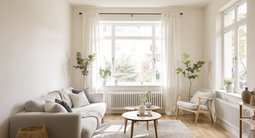
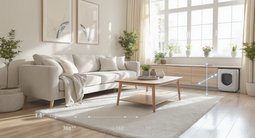
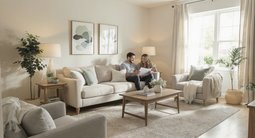



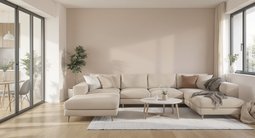


.png)